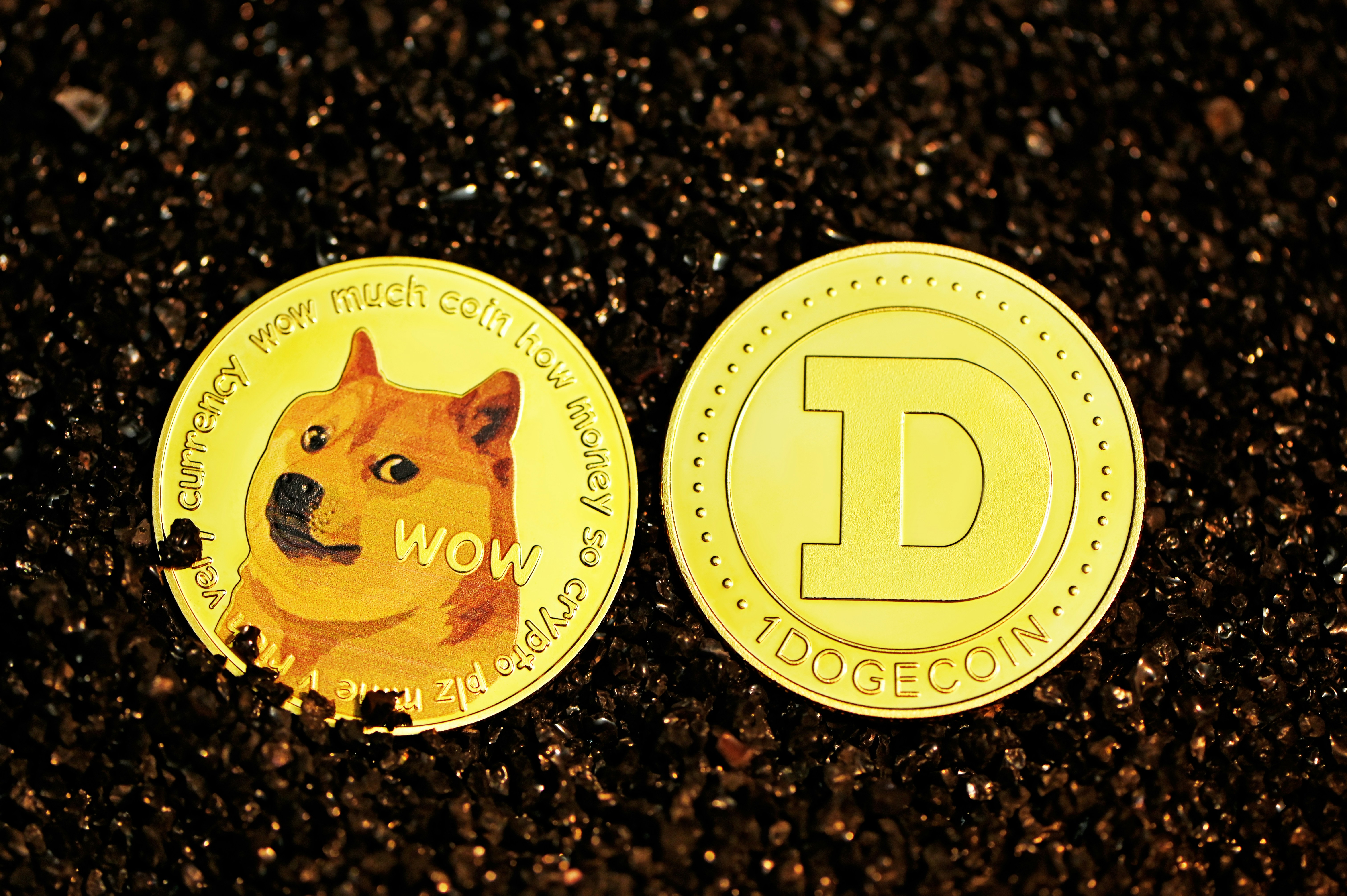
What is Dogecoin?
Dogecoin is a cryptocurrency that began in December 2013 as a playful alternative to Bitcoin, created by software engineers Billy Markus and Jackson Palmer. The currency features the Shiba Inu dog from the popular “Doge” meme as its branding, which contributed to its humorous and approachable image. Initially launched as a joke, Dogecoin was conceived to make cryptocurrency more accessible to a broader audience and to promote a fun community around digital currency. This light-hearted approach endeared it to many users and allowed it to foster a dedicated following.
Over the years, Dogecoin has evolved from simply being a meme-inspired digital currency to a recognized player in the cryptocurrency market. Its functionality includes peer-to-peer transactions and micro-tipping online, where users can send small amounts of Dogecoin as a token of appreciation for content creators. This interactive aspect has made Dogecoin especially popular on social media platforms, where users showcase their support and gratitude with this digital asset.
As of October 2023, Dogecoin has established a significant market capitalization, making it one of the top cryptocurrencies by market value. While Bitcoin and Ethereum remain the dominant forces in the cryptocurrency arena—primarily due to their technological advancements and use cases—Dogecoin has carved out a unique niche. Its community-driven spirit and emphasis on fun have enabled it to maintain a vibrant presence in a market often characterized by volatility and competition. By prioritizing user engagement and a light-hearted approach, Dogecoin continues to promote widespread interest in digital currencies.
Dogecoin’s Price Performance
Dogecoin, initially created as a lighthearted digital currency in December 2013, has undergone remarkable price fluctuations throughout its history. Originally launched with a value of mere fractions of a cent, Dogecoin’s price trajectory began to capture the attention of crypto enthusiasts and investors alike, particularly in the context of the broader cryptocurrency market, which is characterized by its volatility.
One of the pivotal moments in Dogecoin’s price performance occurred in early 2021, when the cryptocurrency began to gain significant popularity, driven largely by endorsements from high-profile figures, most notably Elon Musk. His tweets and public statements regarding Dogecoin catalyzed an unprecedented surge in its value, propelling the cryptocurrency to new all-time highs and marking a significant transformation from its humble beginnings. The price peaked at approximately $0.69 in May 2021, showcasing its ability to garner attention far beyond the crypto community.
Furthermore, Dogecoin’s performance has exhibited noteworthy correlations with Bitcoin and other altcoins. As the leading cryptocurrency, Bitcoin’s market trends often influence the movements of many altcoins, including Dogecoin. During bullish periods for Bitcoin, it is not uncommon to observe parallel price increases in Dogecoin, suggesting a symbiotic relationship. Conversely, during bearish trends, Dogecoin may also experience declines, reflective of the overall sentiment in the cryptocurrency market.
Additional factors affecting Dogecoin’s price include trading volume, community sentiment, and market developments. Events such as cryptocurrency exchange listings and partnerships also play a role. Understanding these dynamics is essential for investors looking to navigate the landscape of Dogecoin and devise effective investment strategies.
Investing in Dogecoin: Risks and Opportunities
Investing in Dogecoin, like many cryptocurrencies, presents both significant opportunities and notable risks. One of the primary characteristics of cryptocurrencies is their inherent volatility. Prices can fluctuate dramatically in a short period, influenced by various factors including market sentiment, news events, and social media trends. As Dogecoin gained popularity, particularly following endorsements from influential figures, its volatility has become increasingly pronounced, leading to risks for investors who may not be accustomed to such swings.
Another risk associated with Dogecoin is regulatory uncertainty. Governments across the globe are still in the process of establishing firm guidelines pertaining to cryptocurrencies. This lack of clear regulation can lead to sudden market reactions that may negatively impact Dogecoin’s valuation. Additionally, as a meme-based cryptocurrency, Dogecoin lacks intrinsic value, unlike traditional assets such as stocks and bonds. This presents a unique challenge for investors attempting to gauge the long-term viability of their investments.
On the flip side, Dogecoin offers exciting opportunities, particularly for those willing to engage with its vibrant community. The Dogecoin community is known for its support and enthusiasm, resulting in creative fundraising initiatives and philanthropic efforts. Moreover, Dogecoin is experiencing increasing acceptance by merchants. As more companies within the retail space begin to accept Dogecoin as a form of payment, its use case is becoming broader, potentially leading to greater mainstream adoption.
For investors considering a stake in Dogecoin, it is advisable to approach this investment with a balanced perspective. Novice investors should start small and familiarize themselves with the cryptocurrency market, while experienced investors might consider diversifying within their crypto portfolio to mitigate risks. Regardless of experience level, keeping up with market trends and regulatory developments can provide valuable insights into making informed investment decisions.
The Future of Dogecoin
The future prospects of Dogecoin remain a topic of interest among investors and technology enthusiasts alike. As the cryptocurrency market continues to evolve, Dogecoin is witnessing increasing attention due to its unique characteristics and community-driven development. Current trends indicate that the overall acceptance of cryptocurrencies is on the rise, with growing institutional interest and retail adoption contributing to this shift. Within this context, Dogecoin has the potential for significant growth as its community advocates for various enhancements and real-world applications.
Technological advancements in Dogecoin are underway, addressing challenges related to scalability and transaction speed. The implementation of improvements, such as the impending upgrades aimed at bolstering efficiency, positions Dogecoin favorably against competing cryptocurrencies. Such upgrades are essential for ensuring that Dogecoin can facilitate large volumes of transactions—thus making it attractive for purposes beyond mere speculation.
Moreover, Dogecoin’s potential use cases are gradually expanding. Increasingly, businesses and charities are beginning to recognize the benefits of accepting Dogecoin for microtransactions and donations. The low transaction fees associated with Dogecoin make it particularly suitable for small-scale payments, allowing users to send money quickly and cost-effectively. Additionally, various collaborations and community-driven projects aim to promote Dogecoin’s utility as a payment method, further solidifying its market position.
Industry experts have made predictions regarding Dogecoin’s trajectory in the coming years. While it is difficult to forecast market dynamics with certainty, indications suggest that if development continues and practical applications materialize, Dogecoin could experience increased adoption. For investors, this evolving scenario represents an opportunity to consider Dogecoin as part of a more diversified investment strategy focused on long-term gains. Balancing potential risks with the promising outlook in the cryptocurrency landscape will be crucial for those considering investment in Dogecoin.


